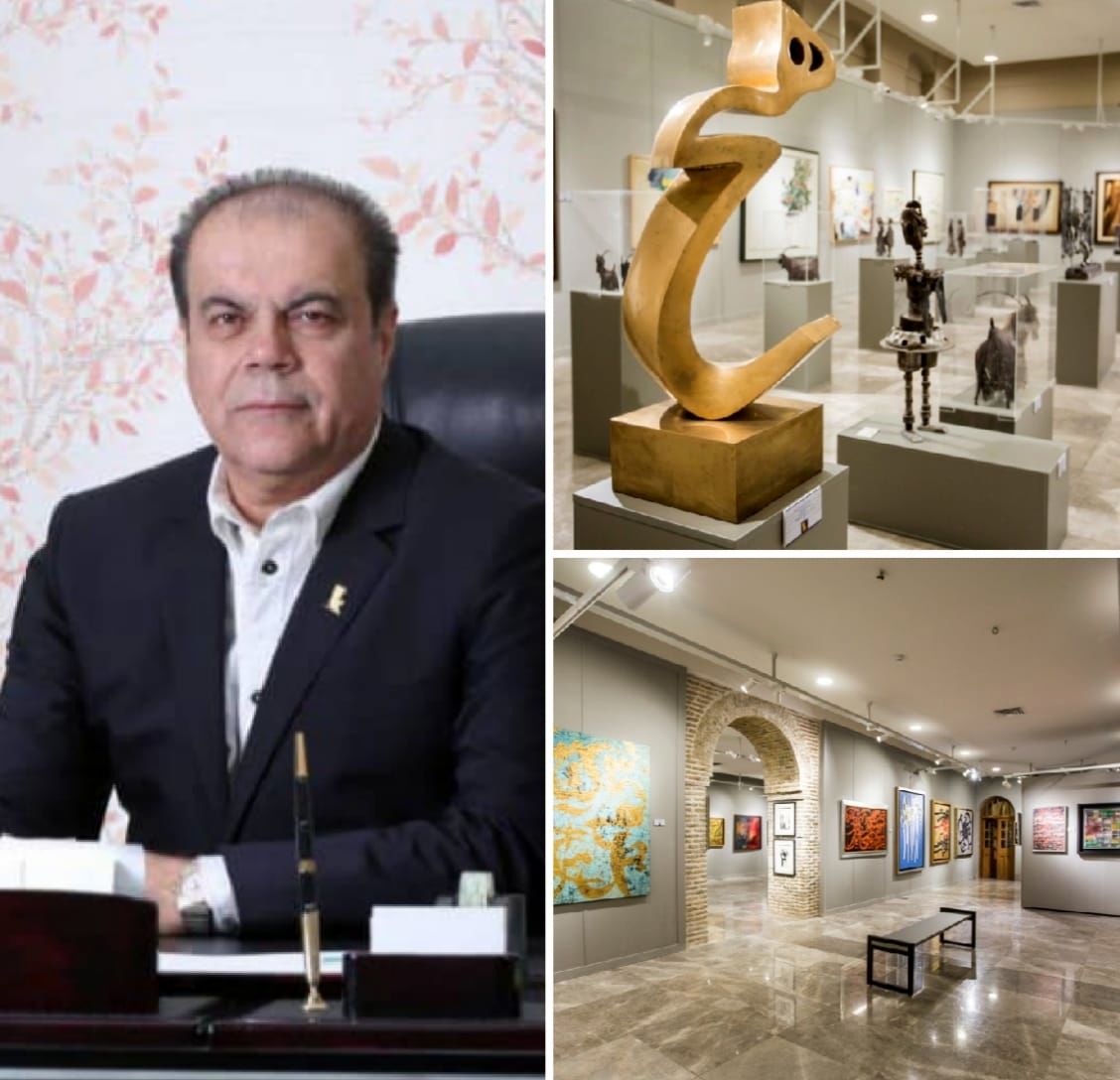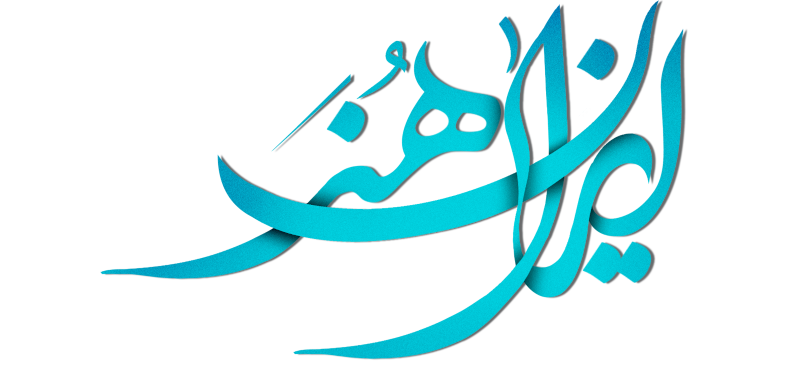“Pasargad Bank” Iran’s Art Market Facilitator / People Welcome Pasargad Bank’s Treasury Containing 600 Unique Artwork in Negarestan Museum Garden / Along with Statements of Ali Akbar Amin Tafreshi

All around Iran, Iran’s one hundred years of modern visual art is gathered in one place: The Museum of Contemporary Visual Arts of Pasargad Bank in Negarestan Museum Garden
Iranart: Kimia Nakhaei: All around Iran, it is only one place that contains Iran’s one hundred years of modern visual art, a place that includes Sohrab Sepehri as well as well-known artists such as Bahman Mohases, Monir Farmanfarmaian, Parviz Tanavoli, Reza Mafi, Faramarz Pilaram, Mohammad Ehsaei, Aydin Aghdashloo, Nasrollah Afjei, Hossein Zenderoudi, Farideh Lashai, Parviz Kalantari, Massoud Arabshahi and many more. If a student, researcher or an art lover or even a tourist desires to revise Iran’s history of modern and contemporary visual arts, there is only one place that they can refer to, a truly unique museum in the heart of Tehran, “The Museum of Contemporary Visual Arts of Pasargad Bank”
The extract of one hundred years of modern and contemporary art of Iranian visual arts elite have been collected in this museum. A treasure that has been gathered from all over the world with a tireless effort and determination to make a brilliant period of time in the history of modern art of this ancient land last for the future. An optimal way in developed countries, that large financial and international institutions act in order to fulfill their social responsibilities. Currently, the Pasargad Bank Museum of Contemporary Visual Arts, with more than 600 artworks from the masterpieces of 165 contemporary Iranian artists in its treasury, is a prestigious place for research by professors, students and local and foreign art lovers and has tried to have at least two artworks by each contemporary artist in the museum. It is worth mentioning that the "Museum of Contemporary Visual Arts of Pasargad Bank" with the official license from the Ministry of Cultural Heritage, Tourism and Handicrafts, is permanently active and is a meeting place for researchers and lovers of contemporary visual arts.
But fulfilling some of the social responsibilities is only part of the fruits of this great cultural and artistic movement, and other features of this cultural and artistic transformation can be listed as follows:
A: Linking economics and art
The "art economy" and the "art market" have a 250 years old history in the world, but the successful experience of this valuable business in the Iranian economy is less than two decades, and like any new economic movement, the Iranian visual arts market needed a reassuring support in order to attract big groups and many buyers to this emerging market.
In the dubious days of 2007, when the sale and purchase of artworks was done with hesitation and in a small and limited numbers, Pasargad Bank's entry into this fledgling market created new equations and, in fact, according to experts, marked positive changes in the market that its vibrancy and prosperity today are indicative of this transformation.
Pasargad Bank "with the aim of supporting the art and artists of Iran and after passing the course of studies and field research, with the approach of collecting a treasure trove of the best masterpieces of contemporary visual arts and establishing a unique museum to review about one hundred years of modern Iranian art history under the name of "Pasargad Museum" and with the start of this movement by a private bank, the foundations of the emerging market of visual arts were strengthened. On the way to reach the point of excellence and achieve the richest artworks for the "Pasargad Museum", firstly direct purchase from prominent masters and worthy young artists in the field of visual arts and secondly purchase from galleries as the most symbolic member of the visual arts community and domestic and international auctions and private collectors were on the agenda.
Interestingly, the media on the one hand and artists on the other hand to attract the attention of large and small investors to the visual arts market, effectively reflected the presence of Pasargad Bank in this market in formal and virtual spaces, and through this pathway they provided the art market of Iran its development and prosperity.

For example, in 2014, Pasargad Bank bought an exquisite and rare artwork by Sohrab Sepehri in an art auction for 700 million Tomans, which was highly regarded in the media, and now art experts believe that this is the culture and reassurance of the market was a turning point for the growth of the price of the artworks of this nostalgic painter-poet and basically paved the way for the increase of the value of artworks to billions.
Pasargad Bank's continuous presence in the contemporary visual arts market as a successful and leading private bank linked the missing link of culture and art to the macroeconomic field of the country and the start of this movement was praised by art experts as one of the effective factors in the prosperity of art economy.
B: Promotion of contemporary Iranian art in international markets
In 2008, Pasargad Bank attracted international attention to the high quality of Iranian art by selling the valuable and magnificent artwork “Oh Persepolis” by Parviz Tanavoli at the Christie's Dubai auction. This brilliant artwork was purchased by the Islamic Museum of Qatar for a price of two million and eight hundred and fifty thousand dollars, which still holds the record for the most expensive work of art in the Middle East after about 13 years.
The widespread media coverage of this sale in the region and even in the world turned all eyes on Iranian artists. English-language media in the region headlined "Iranian shock to Middle East market" and reputable international media published dozens of news reports on the treasure hidden in contemporary Iranian art, and since then every auction of Middle Eastern art has been held anywhere in the world, at least a quarter of all its artworks are the artworks of the artists of our country.
C: The return of artistic masterpieces to Iran
Every time an Iranian visits the Louvre Museum, they regret why the great treasures of the Achaemenid dynasty have been separated from their homeland, unfortunately, this process has been going on rapidly since the 90s, with the focus on the emergence of masterpieces of modern and contemporary Iranian art. Many of the most valuable artworks and collections of the country's top artists are now kept in private collections in Europe and the United States, and especially in Canada, and the Iranian people have been deprived of these great spiritual assets.

Pasargad Bank, with the aim of enriching its treasures and preserving this national heritage, has purchased and returned some of the most important artistic creations of our artists from international auctions in Dubai and London, as well as collectors in France, the United States and Canada. For example, Pasargad Bank's treasures currently contain 17 valuable artworks by Sohrab Sepehri, which is one of the richest and most unique artistic treasures from this perspective.
This initiative of Pasargad Bank and the reverse migration of artistic masterpieces and their return to Iran has always been praised by the art community
Ali Akbar Amin Tafreshi, one of the senior managers of Pasargad Bank and the CEO of Pars Arian Company, who played a pivotal role in establishing the Museum of Visual Arts of Pasargad Bank in March 2017, stated: “There is an unwritten law in the international arena that all large investment organizations such as banks, investment companies, etc. focus part of their activities in the social and cultural spheres. It is natural that all large economic groups receive their resources and energy from society, so it is worthwhile to provide public services to society; The main concept of this thinking is the issue of social responsibilities.”

He pointed out: “The presence of a bank in the context of art market developments must be accompanied by full knowledge and foresight, we have the financial resources of the people and we are a trustee who, while protecting it, must accompany it by added value; at the same time, we consciously entered from the point of the economics of art due to two main reasons: First, the presence of a reputable banking brand in the art market is the prelude to that trend; It is obvious that the presence of large economic enterprises in the art market encourages people to buy artworks, reassures them that apart from high spiritual values, a work of art can be invested in; In addition, when you try to maintain your movement and support, you must use the right economic model for sustainability in order to continue and maintain your support.”
D: A new trend in fulfilling social responsibilities
In order to fulfill its social responsibilities, which it strongly adheres to, Pasargad Bank is proud to establish more than 47 schools and 17 libraries in needy areas of the country along with other charitable donors. It has also given full support to 209 candidates for the national exam during the last 14 years and ...
Dear Islamic Iran is praised in the world for its rich literature, art and culture of its long years, and our historical cultural diplomacy is the adornment of the votes in the United Nations, so this historical advantage must be emphasized with proper and intelligent investment and should an effort to be made with the aim of its expansion and development.
Apart from spiritual and cultural achievements, investing in art undoubtedly guarantees the creation of employment for the new generation and currency for the country, so that this hot spring of art adds tenderness and freshness to the soul of the society.
In addition to establishing the Pasargad Bank Museum of Contemporary Visual Arts, Pasargad Bank has also supported dozens of other artistic activities:
One of the most brilliant examples is investing in the production of an honorable and Oscar-winning film "The Seperation" by the world-famous director Asghar Farhadi, who gave this valuable award to our country for the first time. Receiving this prestigious award, more than any other event, raised the name of Iran millions of times in the world's mass media, and beyond any other promotion, presented the art of Iran to the world.

Also supporting several other successful films, holding four short film festivals with the presence of young and talented filmmakers and helping the growth of brilliant talents, etc. Supporting the opening of the museum in memory of Dr. Hassan Habibi, supporting the country's valuable manuscripts such as printing the Mus'haf Sharif Khorasani in the handwriting of Abdullah Tabakh Heravi, collecting and aggregating the pages of Shah Tahmasebi's exquisite Shahnameh and printing an exquisite one-piece copy of it and also supporting the printing of a collection of paintings by Master Hossein Behzad entitled Ranj and Rang is the other efforts of Pasargad Bank in order to protect the art and culture of Iran.
It is worth mentioning that the Pasargad Bank Museum of Contemporary Visual Arts resumed its activities on June 1, 2021, after a period of closure due to Corona restrictions, and it is now possible for all interested parties to visit its treasury. This museum is located in the museum garden of the Negarestan.


